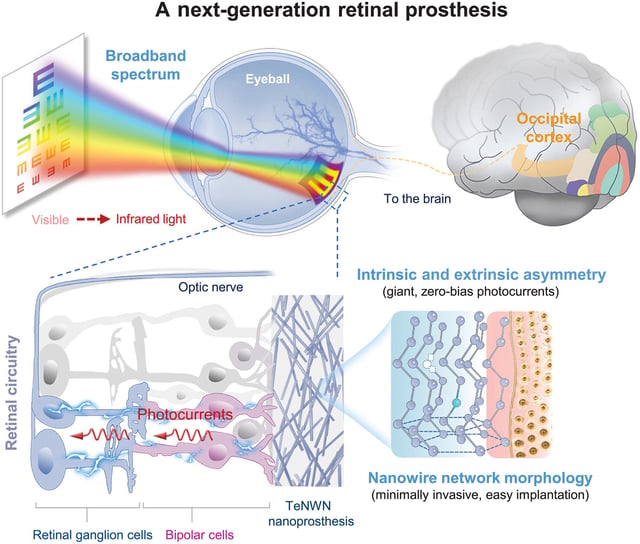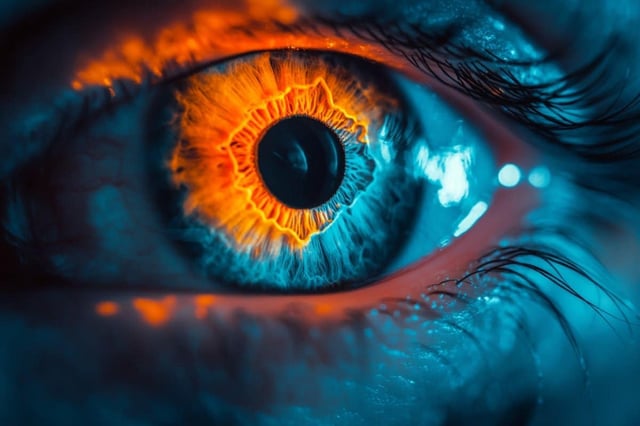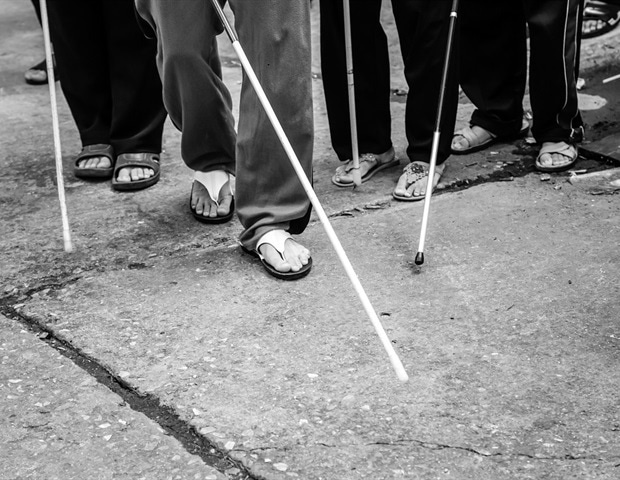Overview
- A three-dimensional lattice of tellurium nanowires converts visible and near-infrared light into electrical signals for retinal stimulation
- Implanted in genetically blind mice, the device restored pupil reflexes and enabled navigation and pattern recognition on par with sighted controls
- Safety and biocompatibility studies in crab-eating macaques showed no adverse reactions and revealed heightened near-infrared detection in sighted subjects
- The nanowire architecture overcomes electrical interference issues of prior prostheses and boosts contrast perception under low-light conditions
- Researchers are now prioritizing cost-effective manufacturing methods to scale up production ahead of human clinical testing


